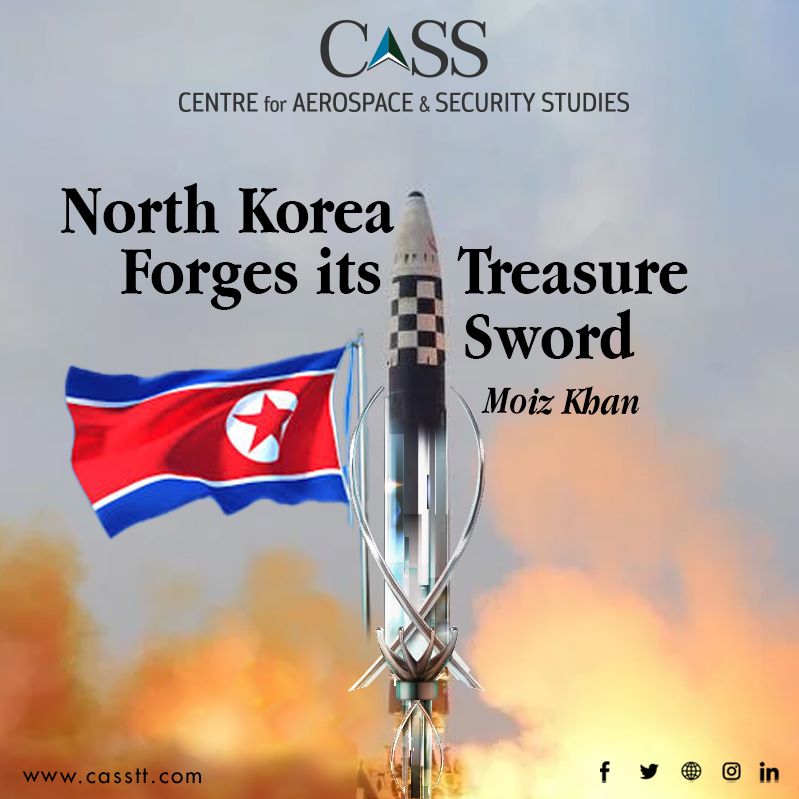Despite international sanctions and condemnation, North Korea continues to press ahead on perfecting its ‘treasured sword:’ referred to the country’s nuclear arsenal. With several nuclear device and delivery system tests, North Korea has managed to enhance its nuclear deterrent both quantitatively and qualitatively in defiance of several UN Security Council resolutions. It has achieved not only an operational nuclear weapons capability but also made it a credible one. The increasing potency of North Korea’s nuclear deterrent has doubled the concerns of South Korea and Japan and has also become ‘a direct threat’ and a ‘real and clear danger’ for the United States (US). As a result, the country has evolved into a problem of deterrence, rather than just a matter of denuclearisation or non-proliferation. To comprehend the progress and its implications, it is imperative to assess the major milestones North Korea has achieved.
The Democratic People’s Republic of Korea (DPRK) has been making strenuous efforts to enhance its nuclear capability for regime survivability and state security. Under the leadership of Kim Jong-Un, it has been actively pursuing advancements in nuclear technology, encompassing the miniaturisation and diversification of delivery systems. In 2013, Kim announced his ‘Byungjin Policy’ aimed at developing his country’s economy and nuclear force in parallel, transitioning from the previous Kim Jong-il’s ‘Songun Policy,’ which prioritised military build-up. Instead, the Byungjin Policy led to reforms in Agriculture and Labour to support economic growth. It also renewed focus on the development of a nuclear deterrent.
However, some voices question the credibility of North Korea’s nuclear deterrent; particularly, the ability to field operational warheads delivered by missiles. Though the uncertainty looms owing to the unavailability of public information, there have been several demonstrations and public statements that indicate its ability to field its nuclear weapons. DPRK conducted its fifth nuclear device test on 9 September 2016, with an estimated yield of 15 to 25 kilotons. The successful test demonstrated the country’s ability to develop a miniaturized warhead design that could be mounted on ballistic missiles. In its sixth nuclear test in 2017, North Korea claimed to have tested a thermonuclear device, further showcasing its advancements in nuclear technology. Experts have drawn different conclusions from the 120-kiloton yield of the test, with some suggesting that it indicated a significant advancement in North Korea’s nuclear capabilities, while others argued that the yield was inflated and the test itself may have been a failure. However, most of them believed that Pyongyang had mastered developing a boosted-fission device and had achieved the capability of miniaturisation. Moreover, the 2017 US Defence Intelligence Agency’s report and the 2021 UN Panel of Experts report noted that North Korea had attained the capability of delivering nuclear weapons on missiles ranging from Short-Range Ballistic Missiles (SRBMs) to Intercontinental-Range Ballistic Missiles (ICBMs). These assertions imply that it has gained the capability of delivering nuclear warheads.
Similarly, North Korea has also made remarkable progress in both its cruise and ballistic missile force. North Korean missiles demonstrate critical features including precision, potency, mobility, higher ranges and manoeuvrability. Pyongyang has been adopting solid propellants and satellite-guided systems for its missiles that constitute a serious threat to South Korea, US assets on the Peninsula, and Japan. Regarding ICBMs, North Korea has already successfully launched liquid propellant, road-mobile Hwasong-14, and Hwasong-15 capable of striking the US mainland, and it recently intensified the threat to the US by test-firing its latest solid propellant Hwasong-18 ICBM. The maintenance of solid-propellant ICBMs is simpler owing to fewer mechanical components, and they can be made operational within a shorter time frame. Moreover, solid propellants also allow for the storage of missiles in a canisterized manner, mated with a nuclear warhead, following its induction. North Korea has also been developing several small and long-range Submarine-Launched Ballistic Missiles (SLBMs). Recently, it also conducted the first test-launches of two nuclear-capable Submarine-Launched Cruise Missiles (SLCMs) with ranges of 1500 kilometres and a nuclear-capable ‘Underwater Unmanned Vehicle’ (UUV), named Haeli. These assets provide North Korea with second-strike capability, allowing the country to maintain and enhance the security and survivability of its nuclear weapons.
Given these developments, North Korea’s nuclear capacity cannot be underestimated. Although this has bolstered the country’s national security, it has raised the threat spectre for regional countries and the US, and has disrupted the balance of power, at least at the regional level. The latter is forcing Japan to enhance its defence capabilities and the South to either seek nuclear weapons or greater US extended deterrence measures.
Hence, North Korea’s nuclear deterrent modernisation conveys four key messages. First, it signals the nearly limited efficacy of military options with the US and its allies to denuclearise the North. Second, the country’s advanced missiles have rendered the US security assurances to allies, in terms of combined exercises and provisioning of anti-ballistic missile systems, largely insufficent. Third, perceived US inability to guarantee the security of the South runs the risk of horizontal nuclear proliferation. Fourth, Western sanctions have failed in containing North Korea’s motivation or ability to reinforce its nuclear deterrent. Therefore, both the US and its allies must prioritise diplomatic solutions rather than resorting to a forceful approach. The Biden-Harris Administration needs to revive the stalled engagements with North Korea, initiated by former US President Donald Trump in 2018, towards finding concrete solutions for the denuclearisation of the Korean Peninsula.
Moiz Khan is a Research Assistant at the Centre for Aerospace & Security Studies (CASS), Islamabad, Pakistan. He can be reached at [email protected]





